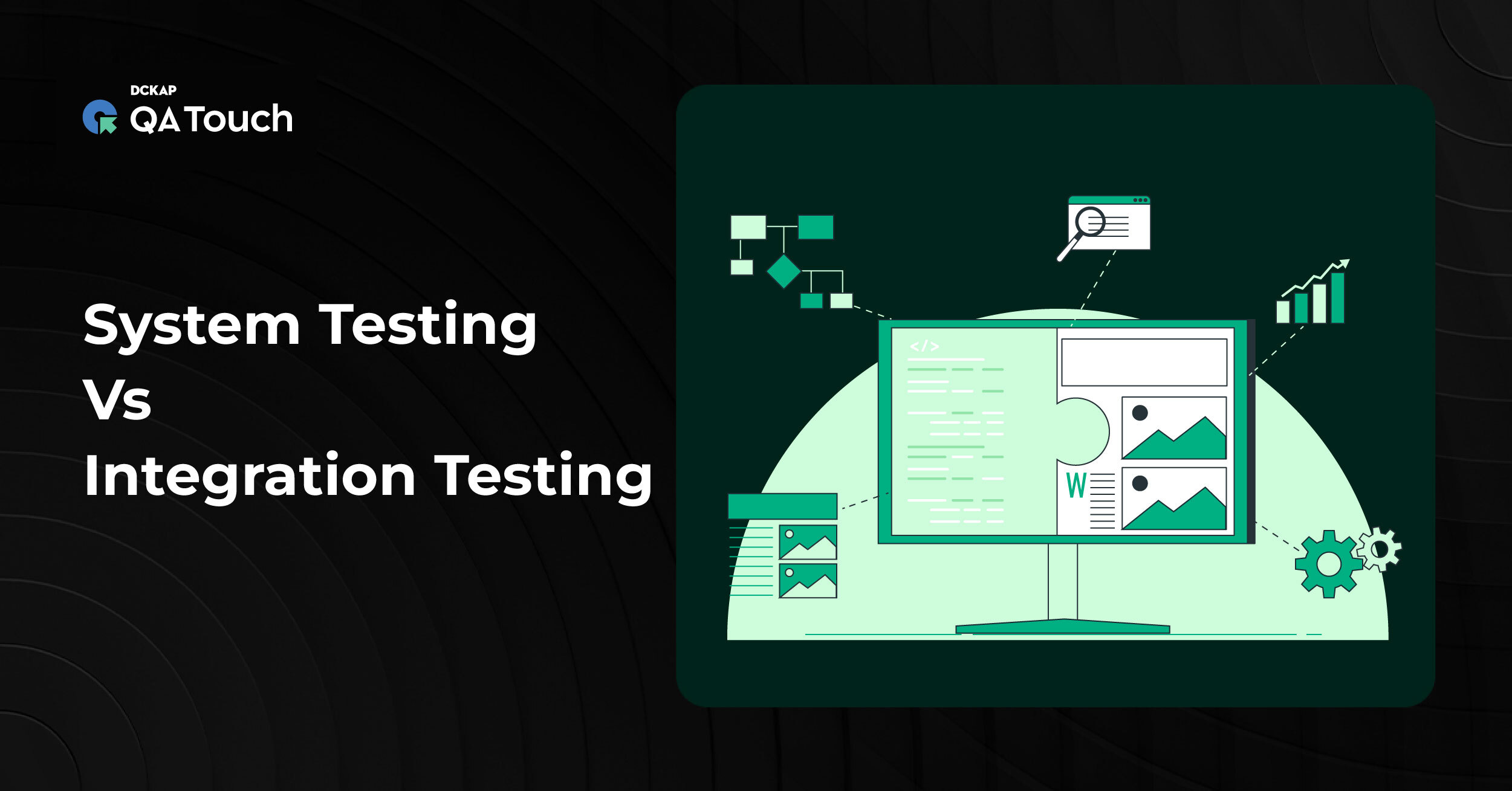Several types of software testing are performed at the different stages of the software development lifecycle (SDLC). Each test has a unique role to play. With the different types of testing, you can ensure that the software is free from all bugs and defects and is working exceptionally well in terms of functionalities. This is crucial for organizations as they cannot take the risk of launching bug-ridden software, which could threaten their business growth.
In this blog, we will talk about the different types of software testing in detail. Read along to find out!
What is Software Testing?
Software testing is the process of ensuring that a product or application performs as required and is free of bugs and errors. The main aim of software testing is to make sure that the software stands out as expected and is functional and reliable, thereby providing an exceptional user experience.
Benefits of Software testing
Here are the benefits of the software testing:
- Improves Quality: Software testing ensures that the product meets the required standards and specifications. By identifying defects early, testing helps maintain a high level of quality, ensuring the software performs its intended functions correctly and efficiently.
- Enhances Security: Testing helps identify software vulnerabilities. Security testing includes evaluating the software for risks such as data breaches, unauthorized access, and other cyber threats, thereby protecting sensitive information and maintaining user trust.
- Cost-Effective: Detecting and fixing defects early in the development cycle is much less expensive than addressing them after deploying the software. Effective testing reduces the likelihood of costly fixes, rework, and post-release patches.
- Customer Satisfaction: When the software functions smoothly, users are satisfied and happy with the product. This leads to better online reviews and customer loyalty for the company.
- Prevents Failures: Software testing helps prevent critical failures that could occur in a live environment. By simulating various scenarios and loads, software testing ensures the product can handle different conditions without crashing or producing incorrect results, thus maintaining its reliability.
- Ensures Compliance: Many industries have regulations and standards that software must adhere to. Testing ensures that the software complies with these legal and regulatory requirements, avoiding potential legal issues and fines.
- Enhances Performance: Performance testing evaluates the software’s speed, responsiveness, and stability under various conditions. By identifying performance setbacks and optimizing resource usage, testing ensures the software performs well even under high load or stress conditions.
Different types of software testing
Based on the execution method, test objectives, techniques and planning, software testing can be divided into various types. Here, have a look at each of these types in detail:

Software testing based on execution method
Here are the different types of testing in software development based on execution method:
Automated Testing
Automated testing involves using software tools to execute pre-written tests on a software application before it is released into production. These tools run tests, report outcomes, and compare results with earlier test runs.
When to Use Automated Testing
- Test automation is ideal for tasks that need to be repeated frequently, such as regression testing.
- Suitable for large volumes of tests that would be time-consuming and error-prone if done manually.
- When the testing requires simulating thousands of users to see how the software performs under stress.
- Helpful for testing individual components or units of the software.
Advantages of Test Automation:
- Automated tests are executed much faster when compared to manual tests, leading to quicker test cycles.
- Automated tests perform the same operations precisely each time they are run, eliminating human error.
- Test scripts can be reused across the various versions of the software.
- Can run a vast number of complex tests across various platforms simultaneously.
- Integrates well with continuous integration/continuous deployment (CI/CD) pipelines, identifying defects early in the development process.
Disadvantages
- High initial investment in tools and training.
- Test scripts require maintenance to keep up with changes in the application.
- Some tests (like UI/UX) may require human observation and cannot be fully automated.
- Writing and managing automated test scripts can be complex and require skilled resources.
Manual Testing
Manual testing involves executing test cases without using automation tools. Testers perform the tests by using the software as an end-user would.
When to Use Manual Testing
- Manual testing is often used while evaluating user experience and interface design, which require human judgement.
- Suitable for unplanned testing to quickly identify major issues.
- Best for projects with short timelines where automation setup might be overkill.
- Useful for testing new features where automated tests haven’t been created yet.
Advantages of Manual Testing
- Testers can adapt to changes and execute ad-hoc testing.
- Testers can think innovatively to test the core business scenarios like an end user.
- Allows testers to use intuition and experience to identify potential issues.
- No need for expensive tools or extensive setup.
- Provides a more accurate representation of the end-user experience.
Disadvantages of Manual Testing
- Manual tests are slower and labor-intensive than automated tests.
- Increased likelihood of mistakes due to fatigue or oversight.
- Manual tests can be repetitive and tedious, leading to inconsistent execution.
- Not practical for large-scale testing due to resource constraints.
Alpha Testing
Alpha Testing is best suited for early-stage validation of software within a controlled environment. It ensures that critical bugs are identified and resolved before the software is exposed to external users.
When to Use Alpha Testing
- Conducted in the initial phases of product development, typically after unit and integration testing but before beta testing
- Performed by internal employees, such as the development team and quality assurance (QA) team, within the organization
Advantages of Alpha Testing
- Alpha testing helps identify and resolve critical bugs and issues before the software reaches real users.
- Testing in a controlled environment allows for thorough examination and detailed feedback, ensuring comprehensive coverage of the software’s features.
- This type of testing enhances the overall quality of the product by ensuring that major defects are addressed early in the development process
Disadvantages of Alpha Testing
- As testing is done internally, it may lack the real-world scenarios and diverse usage patterns that actual users might encounter.
- Testers being part of the organization might have implicit biases and miss defects that fresh eyes would catch.
- Requires significant time and resources from internal teams, potentially delaying the release if extensive issues are found.
- Might not cover all edge cases and real-world conditions due to limited internal user diversity.
Beta Testing
Beta Testing is ideal for final validation in real-world conditions, gathering diverse user feedback and ensuring market readiness.
When to use Beta Testing:
- Beta testing can be done after the alpha testing phase, and before the official release of the product.
- The main aim of beta testing is to gather feedback from real users in diverse environments.
- It also validates the product’s readiness for the market.
Advantages of Beta Testing
- Beta testing provides real-world feedback from actual users.
- This testing Identifies issues that internal testing might miss.
- Beta testing helps in gauging user acceptance and satisfaction.
- Beta testing helps ensure market readiness before official release.
Disadvantages of Beta Testing
- Beta testing provides limited control over the testing environment.
- This testing is slower and potentially less detailed feedback compared to internal testing.
- This testing has a risk of negative impact on product reputation if significant issues arise.
- Beta testing can be challenging when managing feedback and coordinating with many external users.
Software testing based on test objective
Based on the test objective, software testing is of two types: functional and non-functional. Here have a look at the different types of testing
Functional testing
Functional testing ensures that every feature of the application works as per the software requirements. Functional testing can further be classified into:
Unit Testing
Unit testing is the method of testing individual components or units of a software application in separation to ensure they function correctly. Typically, a unit refers to the smallest testable part of an application, including a function or method.
Unit testing makes sure that each unit of the software performs as expected. It helps identify bugs early in the development cycle, making fixing them easier and cheaper
Types of Unit Testing
- White box testing: White box testing is used to find loopholes or faults in an application’s business logic or internal structure.
- Black box testing: Black box testing helps in finding bugs in the functionality of an application without diving into its internal structure.
- Gray box testing: Gray box testing combines both black box and white box testing. We will be covering each of these testing techniques in our sections below.
Tools and Techniques
- Tools: JUnit (Java), NUnit (.NET), pytest (Python), Jasmine (JavaScript), etc
- Techniques: Test-Driven Development (TDD), Mocking (using mock objects to simulate complex behaviors)
| Pros and cons of unit testing | |
| Advantages | Disadvantages |
| Catches issues early in the development cycle | Writing and maintaining unit tests can be time-consuming |
| Improves the quality of code by enforcing good practices | Does not catch integration or system-level issues |
| Serves as documentation for the code, explaining what each unit is supposed to do | Requires effort and discipline to keep tests up to date |
Integration Testing
Integration testing focuses on ensuring the correct functioning of integrated units or components by testing their interfaces and interactions. The purpose is to identify issues that occur when units are combined, such as data transfer errors, interface mismatches, and communication issues.
Types of Integration Testing
- Big Bang Integration Testing: Instead of integrating and testing modules incrementally (a few at a time), Big Bang integrates everything after individual unit testing. It aims to test how all components work together and is suitable for scenarios where integration is postponed until all or most of the components are developed.
- Incremental Integration Testing: Incremental integration testing is suitable when dealing with complex systems with many interdependent components, making it essential to test components in a staged manner
Tools and Techniques
- Tools: JUnit, NUnit, TestNG, Postman (for API testing)
- Techniques: While performing integration testing, you can use either a top-down or bottom-up approach. The top-down approach starts with testing high-level components and progressively integrates and tests lower-level components. The bottom-up approach begins with testing lower-level components first and incrementally integrates and tests higher-level components. Sandwich (Combination of Top-Down and Bottom-Up).
| Pros and Cons of Integration Testing | |
| Advantages | Disadvantages |
| Catches problems early in the interface and interaction between components | Can be complex to set up, especially for large systems |
| Ensures that integrated components function together as expected | Requires other modules or stubs to be ready for testing |
System Testing
System testing involves testing the complete and integrated software system to evaluate its specifications with the requirements. It is used to validate the system’s functionality, performance, and reliability as a whole before it goes live.
Tools and Techniques
- Tools: Selenium, QTP (QuickTest Professional), LoadRunner, Cypress, Playwright, Jmeter
- Techniques: Black-box testing, End-to-End testing
| Pros and Cons of System Testing | |
| Advantages | Disadvantages |
| Ensures that the entire system meets the requirements | Can be lengthy and resource-intensive |
| Simulates real-world usage and environments | May not pinpoint specific issues easily |
Smoke Testing
Smoke testing involves performing a preliminary set of tests to check whether the most critical functions of a software application work. This type of software testing ensures that the build is stable enough for further testing. It acts as a quick check to catch major issues early.
Tools and Techniques
- Tools: Smoke testing is often performed manually, but testers can use tools like Selenium for automation
- Techniques: Smoke testing is performed to have a basic check of main functionalities, sanity checks
| Pros and Cons of System Testing | |
| Advantages | Disadvantages |
| Provides quick feedback on the build’s health | Only covers the most critical functions, not in-depth |
| Identifies showstopper issues early | May miss less critical issues |
Sanity Testing
Sanity testing involves checking specific components or functions of software after minor changes or bug fixes to ensure they work as intended. The purpose is to verify that recent changes have not severely impacted the existing functionality of the software.
Tools and Techniques
- Tools: Sanity testing is often performed manually, but testers can use tools like JUnit, and TestNG to automate tests.
- Techniques: The sanity test follows a narrow approach and is focused on specific areas affected by recent changes
| Pros and Cons of Sanity testing | |
| Advantages | Disadvantages |
| Focuses on specific areas of the application | Does not cover the entire application |
| Faster than comprehensive testing | May not detect issues in unrelated areas |
Regression Testing
Regression testing involves re-running previously completed tests on modified software to ensure that existing functionalities still work correctly. The purpose is to catch new bugs introduced into previously tested code after changes such as enhancements, patches, or configuration changes.
Tools and Techniques
- Tools: Selenium, QTP, JUnit, TestNG, Jenkins (for CI/CD integration)
- Techniques: Automated regression test suites, selective retesting
| Pros and Cons of Regression Testing | |
| Advantages | Disadvantages |
| Ensures new changes do not break existing functionality | Can be resource-intensive to maintain and execute |
| Can be automated for frequent and thorough testing | Requires regular updates to the test suite |
Acceptance Testing
Acceptance testing involves validating the software against the business requirements to ensure it is ready for delivery. It is often performed by the end-users or clients. It verifies that the software meets the acceptance criteria and is ready for production deployment.
Types
- User Acceptance Testing (UAT): Conducted by the end-users to ensure the software meets their needs.
- Operational Acceptance Testing (OAT): Ensures the software is ready for operational use.
Tools and Techniques
- Tools: TestRail, HP ALM, Zephyr, QA Touch
- Techniques: Black-box testing, real-world scenarios, and end-user testing
| Pros and Cons of Acceptance Testing | |
| Advantages | Disadvantages |
| Ensures the software meets business needs | Can be lengthy, especially if many stakeholders are involved |
| Tests in an environment similar to production | User feedback can be subjective and may require negotiation |
Non-functional testing
Non-functional testing verifies non-functional aspects of the product, such as performance, stability, and usability.
Security Testing
Security testing helps identify vulnerabilities in a software application to ensure that data and resources are protected from possible intruders. The main purpose is to ensure that the software is secure and to identify any security weaknesses in the system that could be exploited.
Types of Security Testing
- Vulnerability Scanning: Automated tools are used to scan the system for known security vulnerabilities, providing a baseline assessment of potential weaknesses.
- Penetration Testing: Simulated attacks are conducted to exploit vulnerabilities, mimicking real-world hacker behavior to see if unauthorized access or data breaches can occur.
- Security Auditing: This involves a thorough review of the system’s code and configurations to identify security flaws. Auditors look for issues such as insecure coding practices or misconfigured settings.
- Ethical Hacking: Authorized hackers, known as ethical hackers, simulate attacks to test the effectiveness of security measures and identify vulnerabilities before malicious hackers can exploit them.
- Posture Assessment: Posture assessment includes a comprehensive evaluation combining security scanning, ethical hacking, and risk assessments to provide a complete picture of the system’s security status.
Tools and Techniques:
- Tools: OWASP ZAP, Burp Suite, Nessus, Metasploit, Nmap
- Techniques: Manual code review, automated scanning, threat modeling, penetration testing
| Pros and Cons of Security Testing | |
| Advantages | Disadvantages |
| Identifies security susceptibility before they can be exploited | Can be time-consuming and expensive |
| Protects sensitive data from breaches | Requires specialized skills and knowledge |
Performance Testing
Performance testing helps determine a system’s speed, responsiveness, and stability under a heavy workload. This ensures that the application performs well under expected and peak load conditions and identifies performance bottlenecks.
Types of Performance Testing
- Load Testing: This evaluates how the system behaves under an expected load, such as the number of users or transactions it can handle simultaneously. The goal is to ensure the system can manage high demand without performance degradation.
- Stress Testing: This type pushes the system beyond its normal operational capacity to see how it handles extreme conditions. It helps identify the breaking point of the system and ensures it can recover gracefully from overload situations.
- Endurance Testing: Endurance testing evaluates the system’s performance and stability under a prolonged period of continuous usage to identify potential issues such as memory leaks and performance degradation.
- Spike Testing: Spike testing assesses the system’s ability to handle sudden and extreme increases in load to evaluate its robustness and recovery capabilities.
- Scalability Testing: This examines the system’s ability to scale up or down efficiently in response to changing load conditions. It ensures the system can handle growth without compromising performance.
Tools and Techniques:
- Tools: Apache JMeter, LoadRunner, Gatling, NeoLoad, BlazeMeter.
- Techniques: Load generation, performance monitoring, result analysis, bottleneck identification
| Pros and Cons of Performance Testing | |
| Advantages | Disadvantages |
| Identifies performance issues before deployment | Can be resource-intensive and costly |
| Helps in capacity planning and scalability assessment | May not detect all performance issues, especially those caused by specific user interaction |
Compatibility Testing
Compatibility testing ensures that software applications function correctly across different configurations, including various operating systems, browsers, devices, and network environments.
Types of Compatibility Testing
- Operating System Compatibility Testing verifies that the software operates seamlessly on different operating systems such as Windows, macOS, Linux, etc.
- Browser Compatibility Testing ensures that web applications display and function consistently across different web browsers like Chrome, Firefox, Safari, Edge, and Internet Explorer.
- Device Compatibility Testing is used to test the application’s compatibility with different devices, including desktops, laptops, tablets, and smartphones, considering factors like screen size, resolution, and hardware capabilities.
- Network Compatibility Testing examines how the application behaves under various network conditions, such as internet speeds, latency, and bandwidth limitations.
Tools and techniques
- Tools: BrowserStack, Sauce Labs, CrossBrowserTesting, VMware Workstation
- Techniques: Manual Testing, Automated testing, User Agent Spoofing, Responsive Design Testing, Network Emulation
| Pros and Cons of Compatibility Testing | |
| Advantages | Disadvantages |
| Ensures consistent user experience across platforms and devices | Requires significant time and resources to test across various configurations |
| Identifies potential issues and bugs that may arise in different environments | Limited control over external factors such as browser updates or operating system changes |
| Helps prevent negative user experiences due to compatibility issues | Difficulty in replicating real-world scenarios and user behaviors in testing environments |
Usability Testing
Usability testing is a method used to evaluate how easy and intuitive it is for users to interact with a product, such as a website, software application, or device.
Types of Usability Testing
- Moderated Usability Testing is conducted with a moderator who guides users through predetermined tasks and prompts them to think aloud while interacting with the product.
- Unmoderated Usability Testing involves participants interacting with the product remotely and independently, following predefined tasks and providing feedback without a moderator’s guidance.
- Explorative Usability Testing involves observing users as they explore the product freely, allowing for the discovery of unexpected usability issues and insights.
- Comparative Usability Testing compares the usability of different versions or variations of a product to identify which design performs better in terms of user satisfaction and task completion.
Tools and techniques
- Lookback, Morae, Optimal Workshop, UserTesting
- Task-Based Testing: Participants are given specific tasks to complete within the product, allowing researchers to evaluate task success rates, time to completion, and user satisfaction
- Heuristic Evaluation: Experts evaluate the product against established usability principles or heuristics to identify potential usability problems and recommend improvements.
| Pros and Cons of Usability Testing | |
| Advantages | Disadvantages |
| Provides valuable insights into user behaviors, preferences, and pain points | Requires time, resources, and planning to conduct effectively |
| Helps identify usability issues early in the development process, reducing costs and rework | May not fully represent all user demographics and scenarios, leading to potential biases |
| Increases user satisfaction and loyalty by improving the overall user experience | Iterative testing may be necessary to address all usability issues, prolonging the development cycle |
Types of software testing based on techniques
Software testing techniques consist of the methods used to test a software system. The three types of testing techniques are black box, white box, and grey box testing. Here, have a look at each of them in detail:
Black-box Testing
Black-box testing examines an application’s functionality without peering into its internal structures or workings. The tester only has an understanding of what the software is supposed to do, not how it achieves its goals.
When to Use:
- During the early stages of software development to test functional requirements
- For validating outputs against inputs without considering internal code structure
- When the tester has no knowledge of the internal code or system architecture
- Suitable for acceptance testing, system testing, and regression testing
| Advantages and Disadvantages of Black-box Testing | |
| Advantages | Disadvantages |
| Tests are conducted from a user’s perspective, which can help improve user experience | Limited coverage of test cases as internal paths and logic are not considered |
| Easier to create test cases as no knowledge of internal coding is required | It can be difficult to design exhaustive test cases without knowledge of the code |
| Helps to identify discrepancies and unexpected behavior in software functionality | Bugs related to internal code structure might go unnoticed |
White-box Testing
White-box testing, also known as clear-box, glass-box, or transparent testing, involves testing an application’s internal structures or workings. The tester must have knowledge of the software’s internal coding and architecture.
When to Use:
- During unit testing and integration testing phases
- When the focus is on improving the code structure, logic, and flow
- For validating internal operations against specifications
- To identify vulnerabilities such as hidden backdoors or insecure coding practices
| Advantages and Disadvantages of White-box Testing | |
| Advantages | Disadvantages |
| Thorough testing as it covers all internal paths, conditions, loops, and statements | Requires detailed knowledge of the code and programming skills |
| Helps in optimizing code by identifying hidden errors and inefficiencies | Can be time-consuming and costly due to the complexity of analyzing and testing the code |
| Enhances code maintainability and readability by enforcing coding standards | Not suitable for testing higher levels of functionality from the user’s perspective |
Gray-box Testing
Gray-box testing is a hybrid approach that combines elements of both black-box and white-box testing. Testers have somewhat knowledge of the internal structures or workings of the application, allowing them to design test cases that leverage both perspectives.
When to Use:
- During integration testing and system testing phases
- When a balance between internal and external testing perspectives is needed
- For validating the interactions between components while considering internal states
- When testing complex systems where both functional and structural knowledge are beneficial
| Advantages and Disadvantages of Gray-box Testing | |
| Advantages | Disadvantages |
| Provides a balanced approach by combining the strengths of both black-box and white-box testing | Requires a mix of skills and knowledge, making executing it potentially more complex |
| Can be more efficient in identifying defects related to integration and interactions between components | May still miss some internal defects due to limited internal code visibility |
| Helps in verifying that the application meets both functional and structural requirements | Test case design can be challenging, requiring careful consideration of both internal and external factors |
Software testing based on planning
Both ad-hoc and exploratory testing offer unique advantages and can be highly useful when used appropriately.
Ad-hoc Testing
Ad-hoc testing is an informal and spontaneous testing approach where tests are performed without any pre-defined plan, documentation, or formal structure. Testers execute tests based on their intuition, experience, and knowledge of the system. The primary objective of ad-hoc testing is to discover defects quickly without following a specific test script or procedure.
Characteristics of Ad-hoc testing:
- Ad-hoc testing is conducted without formal test cases or documentation
- Tests are performed quickly as testers identify potential areas of concern
- There is no predefined plan or sequence for executing tests
- Testers may explore different functionalities or scenarios as they test
- Ad-hoc testing is typically rapid and does not require extensive preparation
Exploratory Testing
Exploratory testing is a structured but adaptive testing approach where testers simultaneously design and execute tests based on their understanding of the software without predefined test cases. Testers explore the application, learning about its behaviour, and identifying defects in real time. The focus is on discovering both expected and unexpected behaviors of the software.
Characteristics of exploratory testing:
- Despite being adaptive, exploratory testing follows a systematic approach to testing
- Test design and execution co-occur as testers explore the application
- Testers adapt their testing approach based on their findings and insights
- Testers gain knowledge about the application while testing and use this knowledge to inform further testing
- Exploratory testing is goal-oriented, as the testing efforts are directed towards a specific objective or area of interest
Best practices for software testing
Testers can make the most out of software testing by following certain practices. Let us have a look at some of these here:
- Define objectives, scope, resources, schedule, and deliverables to guide the testing process and ensure alignment with project goals.
- Write detailed and well-structured test cases that cover all functional and non-functional requirements, ensuring comprehensive coverage and traceability.
- Focus on critical functionalities and high-risk areas first to identify major issues early in the testing cycle.
- Execute repetitive and regression tests using automated testing tools. This will increase efficiency and allow manual testers to focus on more complex scenarios.
- Integrate code frequently and run automated tests with each integration to catch defects early and ensure code quality.
- After any code changes or updates, conduct regression testing to ensure existing functionalities are not adversely affected.
- Be knowledgeable about various testing types (e.g., functional, performance, security, usability) and apply them appropriately to different aspects of the application.
- Use a robust defect tracking system to log, prioritize, and manage defects from discovery to resolution, ensuring clear communication and accountability.
- Encourage collaboration between developers, testers, and other stakeholders to ensure a shared understanding of requirements and expectations.
Conclusion
Software testing is crucial to ensure the application’s or software’s overall functionality. As a result, testers need to know about the different types of software testing and methodologies. Choosing the right testing type also depends on your project’s specific needs and requirements. The best practice is to blend the various testing techniques to ensure high-quality software products.
QA Touch is an end-to-end test management tool that effortlessly manages test cases from a single platform. The built-in ChatGPT-driven test case creation feature also makes creating test cases easier and quicker.
Experience the power of AI testing with QA Touch. Start your 14-day free trial.
The platform is absolutely free to use until you are ready to upgrade.














